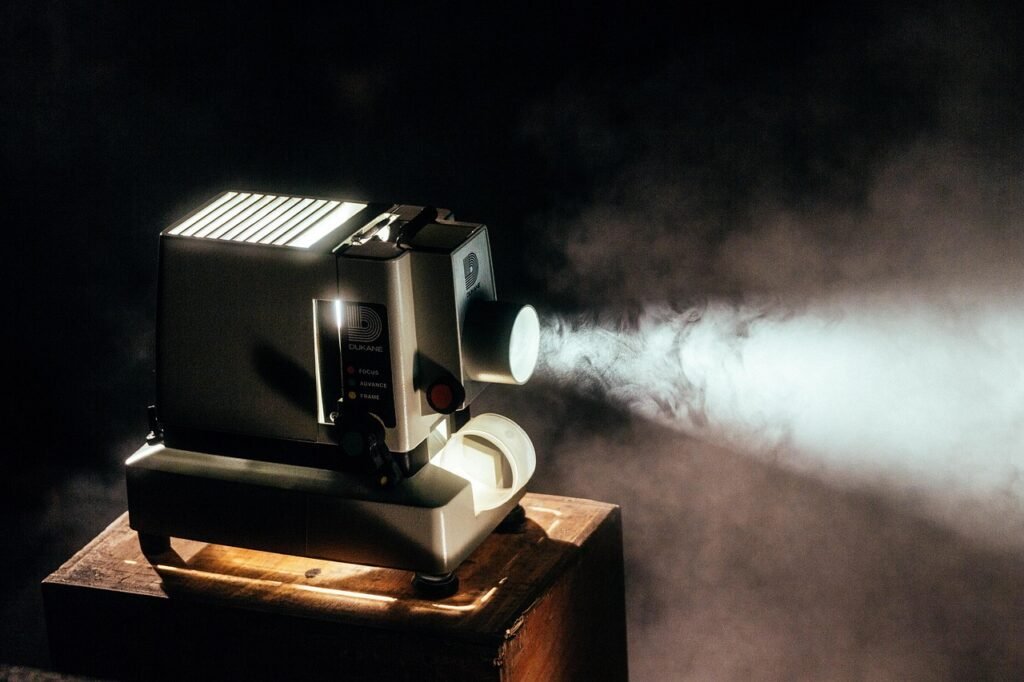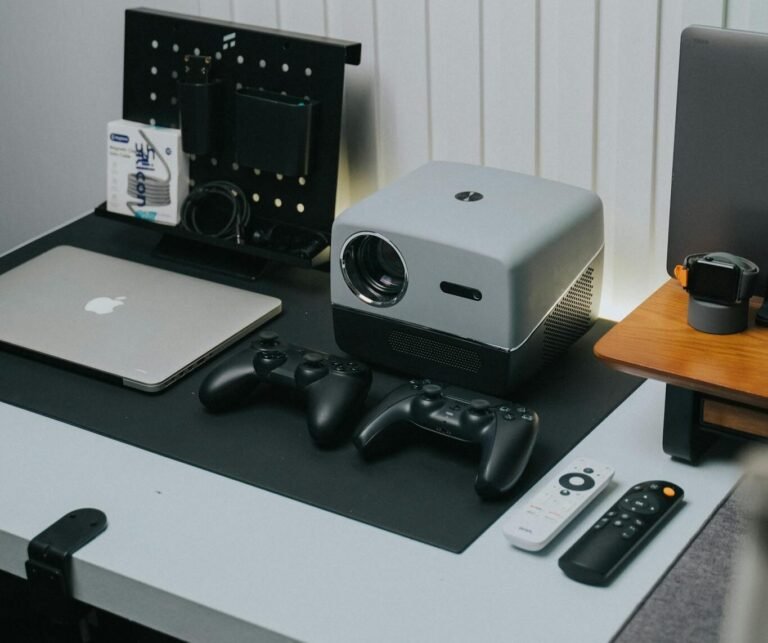
Affiliate Disclosure: As an Amazon Associate, Mini Projector Central may earn a small commission, at no extra cost to you, from qualifying purchases made through our links. Thank you for the support!
Choosing Your Mini Projector? Environment Matters
When selecting a mini or portable projector, one of the most critical factors is the environment where you plan to use it most often. Projectors designed for outdoor use face different challenges than those primarily used indoors, leading to significant differences in their features and performance. Understanding whether you need an outdoor vs indoor mini projector is essential for making an informed decision that ensures optimal performance and longevity.
While all mini projectors offer portability, their suitability for different settings varies widely. Outdoor environments often involve dealing with ambient light, potential weather exposure, and varied power access. Indoor settings, on the other hand, typically offer controlled lighting but may prioritize factors like quiet operation and high image fidelity in darker conditions.
This guide will compare the key differences between outdoor and indoor projectors across crucial aspects like brightness, durability, and connectivity, helping you choose the right device for your needs.
- Official Unlimited Streaming, Massive Entertainment: BOOM mini smart projector brings built-in Google TV to your big scr…
- Smart Integration, Effortless Living: Seamlessly connect to the Google ecosystem with built-in Google TV, hands-free Goo…
- Always in Focus, Ready in 3 Seconds: Powered by advanced ToF technology, BOOM mini movie projector delivers real-time au…
Brightness and Performance Differences
One of the most significant distinctions between outdoor and indoor projectors lies in their brightness, measured in lumens, and how this impacts performance in different lighting conditions.
- Indoor Projectors: Designed for controlled or darker environments like living rooms or dedicated home theaters.
- Optimal brightness typically ranges between 1,000 to 2,500 lumens.
- Focus is often on color accuracy and fine detail in dim settings, making them ideal for presentations or movie-watching where ambient light is minimal.
- Outdoor Projectors: Must contend with ambient light, even during evening hours.
- Require much higher brightness levels, typically ranging from 2,500 to 5,000 lumens or more.
- Higher lumens are essential to prevent images from being washed out by ambient light.
- Advanced features like HDR (High Dynamic Range) can improve contrast and color accuracy in less controlled lighting.
- Related posts: Fixing a Blurry Projector Image: A Practical Troubleshooting Guide.
Specific models like the Epson Home Cinema 2150 exemplify optimal brightness and color for indoor use, while models like the BenQ GS2 are built with higher lumens and features like water resistance for outdoor projections.
Durability and Weather Resistance
The environment significantly dictates the required durability and weather resistance of a projector.
- Indoor Projectors: Designed for stable, controlled indoor environments.
- Prioritize image quality and compactness over ruggedness.
- Durability standards typically do not account for exposure to dust, moisture, or extreme temperatures.
- Require specific settings, often a dark room, for optimal function.
- Outdoor Projectors: Built to withstand environmental challenges.
- Incorporate rugged materials and protective features like sealed enclosures to prevent moisture ingress.
- Often have IP ratings indicating resistance to dust and water.
- Made from corrosion-resistant materials to handle rain, humidity, or snow.
- Possess wider temperature tolerances for functioning in various climates.
- May feature drop-resistant designs
Examples illustrating this include rugged outdoor projectors like the Epson EX7260 and the BenQ GS2 (known for durability), contrasting with indoor models like the Optoma HD146X, which focus on performance over weather resilience.
- [Ultimate Visual Detail – 600 ANSI | 4K Support] The SALANGE 1080P Native projector delivers true 600 ANSI brightness an…
- [ 2025 New Era Projector – 5G WiFi | Smart App ] —farewell to clunky, outdated systems. This SALANGE projector features …
- [ Effortless Setup – Electric Focus | Auto Keystone ] This ceiling projector features advanced electric focus, automatic…
Connectivity Options and User Experience
While many connectivity features are shared, their implementation and impact on user experience differ based on whether the projector is for outdoor or indoor use.
Related posts: Projector Connectivity Options Explained: HDMI, USB, Wi-Fi, Bluetooth.
- Outdoor Projectors: Need flexibility for various setups.
- Often includes multiple HDMI ports for connecting laptops, streaming devices, or consoles in open spaces.
- Wireless capabilities like Bluetooth and Wi-Fi are highly valued for convenience, allowing streaming from smartphones or tablets without extensive cabling.
- May face connectivity challenges due to distance from Wi-Fi sources or interference.
- Indoor Projectors: Often used in more controlled home entertainment setups.
- Prioritize stable connections for high-definition image and sound quality.
- Reliable wired connections, particularly HDMI, are crucial for optimal performance.
- It can also support wireless streaming, often performing more reliably under stable indoor network conditions.
Examples like the Anker Nebula Capsule (often used outdoors) highlight versatility in connectivity, while dedicated indoor models like some Epson Home Cinema projectors emphasize stable wired performance for home theater quality.
Conclusion: Selecting the Right Projector for Your Environment
Choosing between projectors based on where you’ll use them most – outdoors or indoors – means evaluating key differences in brightness, durability, and connectivity.
Outdoor projectors prioritize high brightness (2500+ lumens) to combat ambient light, rugged durability, and weather resistance (often with IP ratings) to withstand the elements, and versatile connectivity for varied setups.
Related posts: Top Portable Projectors for Ultimate Outdoor Movie Experiences.
Indoor projectors focus on optimal performance in controlled lighting, emphasizing color accuracy, contrast, and resolution with less need for extreme durability or weatherproofing. They often rely on stable wired connections for peak image quality.
Ultimately, the “best” choice depends on your primary usage environment. For backyard movies or presentations in varied locations, an outdoor-focused projector is necessary. For dedicated home theaters or consistent indoor use, an indoor projector tailored for image fidelity in the dark will likely provide a superior viewing experience. Carefully consider the demands of your environment to select the projector that’s best suited for the task.
Related posts: Portable Projector Buying Guide: What to Look for Today.
- 【4K Projector & HDR10 Stunning Brightness 1600 ANSI 】 DIPIKPRJ Adopt 6” 1080P Screen to display which have Higher clarit…
- 【2025 Newest Auto Focus & Auto 6D Keystone Correction & 500″big Screen】①➤Instead of fussy and repetitive manual adjustme…
- 【Latest WiFi 6 Projector & Support DNS】①➤Wi-Fi 6 is compatible with 2.4GHz and 5GHz networks, with the maximum rate up t…
Frequently Asked Questions
Q: What is the biggest difference between an outdoor and an indoor projector?
A: The most significant differences are typically brightness (outdoor needs much higher lumens for ambient light) and durability/weather resistance (outdoor models are built to withstand elements like moisture and dust).
Q: Can I use an indoor projector outside?
A: You can use an indoor projector outside, but only in a completely dark environment (after sunset) and you must ensure it is protected from any moisture, dust, or temperature extremes, as they are not built for these conditions. Performance will likely be poor if there is any ambient light.
Q: How many lumens do I need for an outdoor projector?
A: For nighttime outdoor viewing, at least 1500-2000 lumens is recommended, but for any visibility during twilight or with nearby lights, 2500-5000+ lumens is often necessary. Daytime outdoor use requires very high lumens (3000+ in shade, often impractical in direct sun).
Related posts: Mini Projector Brightness Guide: How Many Lumens Do You Need?
Q: Are outdoor projectors waterproof?
A: Not necessarily waterproof, but many are water-resistant, often indicated by an IP rating (like IPX2 or IPX4), meaning they can withstand light splashes or rain. Check the specifications carefully; very few are fully submersible.



![[1600 ANSI Auto Focus & Auto Keystone] Smart 4K Outdoor Projector...](https://m.media-amazon.com/images/I/41keC1extUL.jpg)

